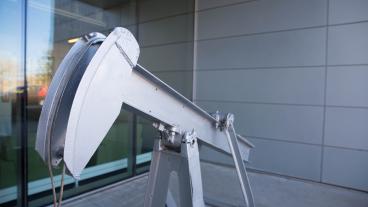Colorado School of Mines research boosting availability of critical minerals, metals
With nearly 150 years of expertise in the development and stewardship of the Earth's natural resources, Colorado School of Mines is a global leader in subsurface earth resources science and engineering. Across Mines, teams of faculty, students and industry collaborators are tirelessly working together to solve challenges associated with sustainably securing and producing the metals for modern society and for our future energy requirements.
The Center for Advanced Subsurface Earth Resource Models (CASERM) is one of the nation’s premier research centers developing fundamental knowledge that transforms the way geoscience data are used in the discovery and mining of critical minerals and metals.
“With President Biden invoking the Defense Production Act to boost critical minerals and metals supply for America, this is an exciting time for Mines and CASERM, providing real-world solutions to deliver essential innovations addressing strategic, economic, and societal needs,” said Walter Copan, Vice President for Research and Technology Transfer at Mines.
Established in 2018, CASERM is a collaborative research venture between Mines and Virginia Tech that is supported by a consortium of mining companies, analytical instrumentation and software developers, and federal agencies. The center forms part of the I-UCRC program of the National Science Foundation (NSF).
“Interdisciplinary researchers and students from both universities in fields including geology, mineral exploration, extractive metallurgy, geophysics, and data analytics are working together to develop novel methods and technologies transforming the mining value chain,” said Thomas Monecke, professor of geology at Mines and CASERM director. “Working closely with our consortium members has been key to our success.”
Jonathan Knapp, chair of CASERM’s industry advisory board, noted: “Research in the center spans the entire mine life cycle ranging from mineral exploration and discovery through sustainable mining, mine safety, and reclamation. In addition to the research, the membership values that CASERM is training the next generation of scientists and engineers working in the extractive industry. Without a highly skilled workforce, we as a nation will not be able to secure the domestic supply of critical and strategically important minerals and metals.”
Erik Westman, professor of mining engineering at Virginia Tech, added: “The research and program of the center is shaped by our members. We have well-established mechanisms for technology transfer in place that allow our members to make immediate use of our discoveries.”
Amongst its many projects, CASERM conducts cutting-edge research on cobalt deposits in Idaho, one of the major potential future domestic sources of this important battery metal.
“Together with our industry partners, researchers from the Unites States Geological Survey, the Idaho Geological Survey as well as students from Western Colorado Community College, we are unraveling how cobalt has been enriched in these sedimentary-hosted deposits in Idaho,” said lead investigator Katharina Pfaff, research associate professor at Mines. “We are applying an array of innovative technologies to better understand the geology of the subsurface by combining transformative core scanning technology developed by CASERM member Minalyze AB with microanalytical research tools provided by our partner Hitachi High-Tech Canada. The application of modern machine learning techniques allows us to combine heterogeneous data sets acquired at different scales, providing companies with solutions and workflows that increase the chance of exploration success and permit more accurate resource assessment for economically viable U.S. mining and metals processing.”
CASERM will be testing novel drone-based exploration techniques this summer near Salmon, Idaho.
“Support from the National Science Foundation takes this research to the next step by bringing together community stakeholders, the extractive industries, governmental agencies, and policymakers to pave the way towards sustainable development of these minerals deemed critical for the nation’s energy security and climate goals,” said Elizabeth Holley, associate professor of mining engineering.




